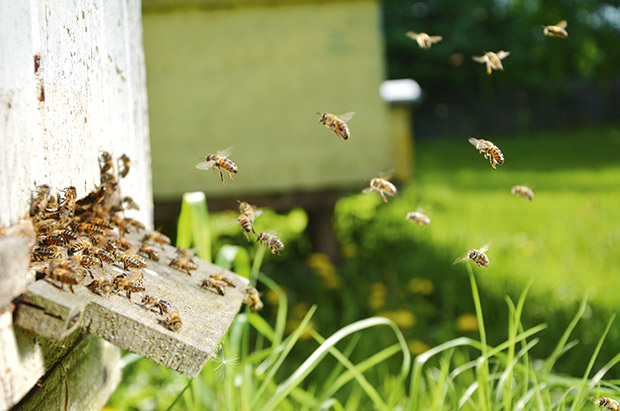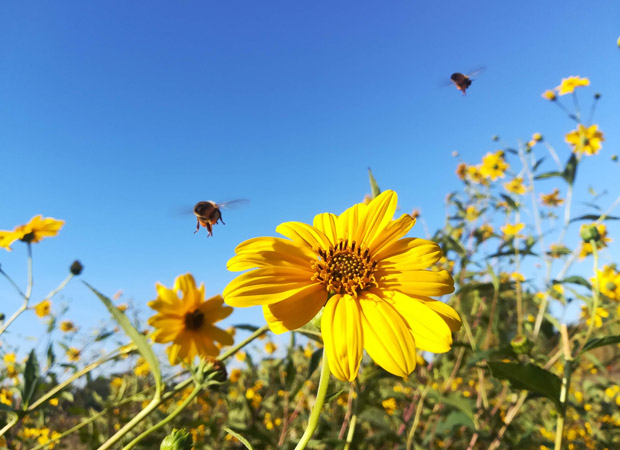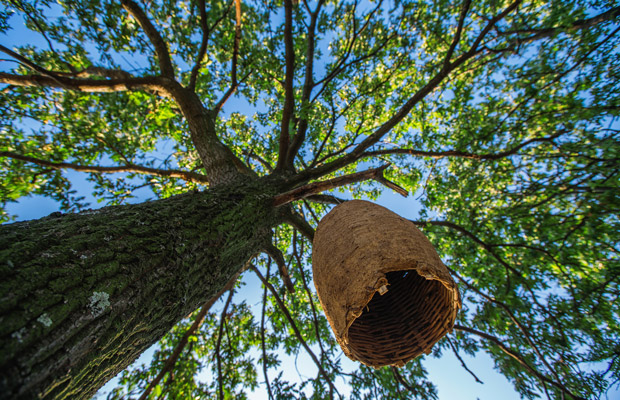7 tips from a beekeeping expert for successful beehive placement

Location is critical for bees, and your neighbours.
Words: Lucy Tasker
A beehive can fit into any location: wide open countryside, in the corner of the garden, on an urban terrace or rooftop. Choosing the right position for a hive makes a big difference to the health and happiness of your colony, and your neighbours. You can move a hive after you’ve introduced bees into it. However, it’s easier to have it in the right spot in the first place.
1. Easy access
New Zealand law requires that you are able to walk around your hives with no obstacles. You’re going to need to access your hive/s on a regular basis (particularly in summer), so it’s practical to place them somewhere that makes it easy for you to inspect and work on them.
2. Sun exposure
The ideal temperature inside a hive is around 35°C. In colder areas (with average highs below 22°C), placing hives in full sun helps to keep them warm. In hotter regions (with temperatures hitting 25°C+), partial shade is better.
The time of day when the sun hits the hives is also important if you want your bees to make the most of the day. Look for a spot that gets sunshine first thing in the morning and position the hive entrance to face the sunrise. Early morning sun helps wake the hive up and get the workers going after the cooler temperatures overnight.

3. Weather exposure
Wind can knock hives over, blow in rain, and dislodge covers. Place hives in a sheltered spot, behind a hedge or in the lee of a hill. If bad weather does hit, you can secure them using bricks or hive straps.
4. Moisture & ventilation
Hives are at risk from mould if placed on damp or flood-prone ground. This makes it harder for bees to cure the honey and potentially makes a colony more susceptible to disease. Place hives on a wooden stand or pallet to improve air movement through the hive. A ventilated bottom board can also prevent water pooling on the base.
5. Flat and firm
Place your hives on flat, firm ground. Many people set up hives in summer when it’s dry, without considering how muddy the soil gets in winter. Look for an area away from big trees and shrubs. Check the ground for dampness, sponginess, and a soft, sandy texture. These can cause trouble in wet weather, making your hive more likely to sink or tip over.

6. Drinking water
Bees need water to survive. In summer, they will crowd around water sources, drinking, and transporting it back to the hive if needed. If there is no natural water source near your hive, add one. Use a clean, shallow, plastic tray or bird bath.
Fill it with stones or create ramps so bees can easily access the water; if they fall in and there’s no way to get out, they will drown. Place water in front of the hive, facing the entrance, as bees tend to look for water immediately after leaving the hive.
7. Bee considerate of your neighbours
A beehive’s position can affect your neighbours, particularly in the city. Bees have a straight flight path (at around head height), which could mean your neighbours are frequently confronted by bees if the hive entrance faces their garden or home. Encourage bees to fly up above head height by placing a barrier (like a fence or hedge) 1-2m from the hive entrance.
If you’re new to beekeeping and unsure how your neighbours will react, have a chat with them before you install your hives. People are less likely to be upset if they’ve been warned. Passing on a jar or two of honey when you finally harvest it is also an excellent way to help neighbours feel more positive about your bees.
Love this story? Subscribe now!
 This article first appeared in NZ Lifestyle Block Magazine.
This article first appeared in NZ Lifestyle Block Magazine.
